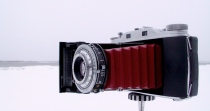Fascinating article in the LA Times by P. J. Huffstutter about the historical detective hunt to find handwritten documents of Abraham Lincoln. Huffstutter goes on the road with history detectives as they check leads about new sources of Lincoln’s papers.
They found “an original of the so-called “ghost amendment”, a proposed but never ratified, 13th Amendment, which was an attempt to avoid the Civil War by making slavery permanently legal in the South.” This is only the second of 34 originals sent by Lincoln to governors to be found.
Some 11,000 pieces of paper in Lincoln’s handwriting have been found. The task has been made more difficult because immediately after his death, people went into public records and sought legal documents that Lincoln as a lawyer had filed over the 25 years of his legal career prior to his Presidency. They often clipped the signature from the documents. Members of the project have become experts in Lincoln’s handwriting.
The project began back in 1980. In 2000, the Lincoln Legal Papers were published on DVD, a collection of nearly 100,000 legal documents. The hunt for paper is now expanded beyond legal documents. A fascinating story of history and detective work.














